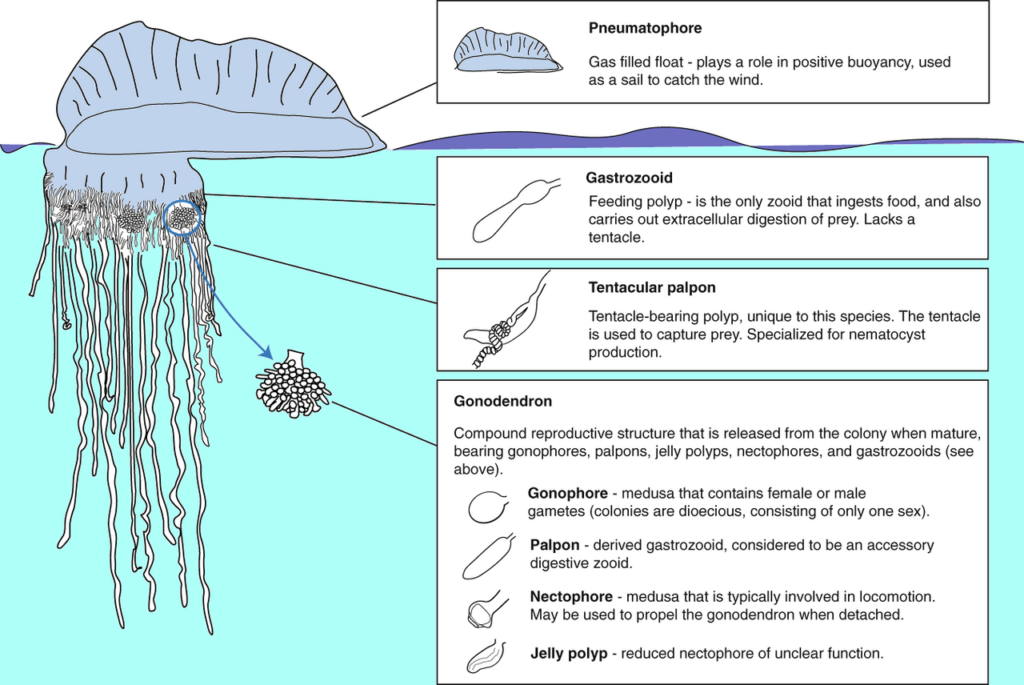Portuguese Man-of-War
Portuguese Man-of-War on Madeira Beaches: What You Need to Know
Visitors to Madeira’s stunning beaches may encounter an unexpected guest—the Portuguese man-of-war. While beautiful, this marine creature poses risks for swimmers and beachgoers. Understanding what it is, why it appears, and how to stay safe is essential during your visit.

What Is the Portuguese Man o’ War?
Despite its jellyfish-like appearance, the Portuguese man o’war is actually a siphonophore. It’s a colony of organisms working together as one. It features a balloon-like float above the water and long, stinging tentacles beneath. These tentacles can grow up to 30 meters and contain venomous cells that sting even after the animal is dead.

Why Do They Appear on Madeira?
Madeira is surrounded by the warm currents of the Atlantic Ocean. These currents, especially in spring and early summer, can carry Portuguese man-of-war to the island’s shores. Strong winds and tides push them onto beaches. This phenomenon is natural but unpredictable.
You find them also in many other parts of the world such as from Florida to Texas, the Mediterranean Sea, Iberian Peninsula, and Canary Islands to name but a few examples.

Are They Dangerous?
Yes, their sting can be painful and cause serious reactions. Symptoms include burning, welts, nausea, and in rare cases, breathing difficulties. Children, the elderly, and allergic individuals are most at risk.
How to Treat a Portuguese Man o’ War Sting?
When stung by a Portuguese man o’ war, you may experience a sharp stinging or burning pain, swelling and redness in the affected area and red string-like marks could be left on your body. If you are unlucky enough to get stung by one of them, then it is recommended that you gently remove any tentacles that could still be attached to you but do not use your bare hands! Rinse the affected area with hot water to deactivate the remaining toxins and then apply heat to the area. If you have a severe reaction then you should definitely seek medical attention!
What Should You Do?
If you see warning signs at the beach, do not enter the water. Lifeguards and local authorities often raise indicate hazardous marine life. If you spot a one, avoid touching it—even if it looks dead. If stung, rinse the area with salt water and seek medical attention immediately.
Stay Safe, Stay Informed
Check local news or ask lifeguards about conditions before swimming. Madeira’s beaches are generally safe, but nature sometimes brings surprises. By staying informed, you can enjoy your trip without worry.